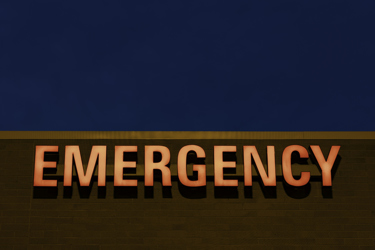6 Technologies That Could Prevent Medical Emergencies Before They Happen
By Kayla Matthews, Productivity Bytes

The best medicine is preventive. Catching health issues before they become emergencies has been demonstrated to be more cost-effective and provide better patient outcomes.
Now, new medical devices made possible by advances in other fields, like IoT, AI, and modern material design, are changing the healthcare field by improving preventive medicine.
Here are six new technologies that can prevent medical emergencies before they happen.
1. Remote Patient Observation
Use of IoMT (Internet of Medical Things) devices remotely keep track of critical patient information — like heart rate, blood pressure, blood oxidation, or any information that clinicians may need to keep a patient as stable and healthy as possible.
These remote observation systems can provide doctors with immediate patient updates, ensuring the quickest possible response to emergencies. They can even prevent them before they happen with predictive analytics that can pick up on subtle patterns in patient health information and predict if or when major medical issues may arise.
An IoMT setup can, for example, use a wearable health device — similar to a smartwatch or fitness tracker — to keep doctors updated on a patient's heart rate variability (HRV). These wearables can detect patterns in HRV that may indicate risk to heart health, allowing doctors to notify patients and bring them in for a quick follow-up before a medical emergency occurs.
Some advanced applications of IoMT tech are even better at providing health data and can be less intrusive. One experimental project being developed at MIT uses a combination of the Wi-Fi in a patient's home and AI analysis to observe a patient as they move. It keeps an eye on their heart rate, breathing, and movements for signs of potential health issues.
2. Telemedicine And Telehealth
Impaired access to healthcare can have significant negative impacts on patient health outcomes. Barriers between a patient and proper facilities have been shown to increase the risk of worse health outcomes and potentially lower quality of life.
New technology may help lower some of these barriers. Telemedicine, powered by improved internet infrastructure and new network technology like 5G, uses wireless connections to bring doctors to patients who can't visit them in person.
Telemedicine initiatives can provide patients with access to remote specialists or standard medical care. This can be especially valuable for patients in rural areas, or for people with limited mobility, both of which can have difficulty accessing any kind of regular medical care.
3. Flame Resistant Clothing
The best possible safety equipment is essential in ensuring that minor accidents — especially in industrial settings — don't become medical emergencies.
Flame resistant clothing, along with other safety equipment like high-voltage gloves, can limit the dangers posed to workers in environments with high currents and dangerous voltage levels.
Fires caused by explosions or arc faults can pose a significant danger to workers. With the right equipment, the damage caused by these accidents can be minimized, ensuring the best possible health outcomes.
4. AI Radiology Analysis
New radiology tech uses AI analysis to look for signs of disease or illness — like breast cancer — in medical imaging, like mammograms. In one study, these AI tools were found to be even better than radiologists at spotting the warning signs of breast cancer.
AI tools are already becoming commonplace in medical devices that scan for certain conditions. These tools are being used in CT scanners to reduce the amount of visual noise on a scan, providing a clearer image for doctors to analyze. Soon, these devices may integrate AI analytics as a tool that can help doctors spot serious diseases, like cancer, sooner than ever before.
5. Surgical Sponge Detection
Surgical equipment being left behind in patients is a surprisingly common patient safety event that can lead to serious complications.
New technology lowers the risk of this kind of event by taking advantage of RF tags embedded in surgical sponges and towels. Combined with RF detection, it's possible to quickly scan a patient for foreign bodies that may have been left behind during surgery.
The technology isn't just limited to sponges — RF tagging and detection can be used for just about any surgical equipment or tool that may be left behind by accident.
6. New Flu Vaccines
Despite advances, the flu continues to pose serious health risks, especially for the young, elderly and immuno-compromised.
New flu vaccines recently approved by the FDA use high doses or special compounds, called adjuvants, which boost the human immune system. This helps it respond to threats like the flu and improves the vaccine's efficacy.
Medical researchers are also pioneering new development strategies that use cutting-edge technology to discover new, potentially more effective vaccines. For example, one team in Australia used an AI researcher to develop a vaccine that employs a never-before-used adjuvant. It was found by the team to be more effective than even some of those adjuvant-boosted inoculations currently in use.
Better adjuvants could easily make flu vaccines much more effective at protecting the vulnerable from influenza's worst effects.
Preventing Medical Emergencies With New Technologies
Preventive medicine is both cost-effective and essential at providing the best possible health outcomes. A range of new technologies is taking advantage of recent breakthroughs to prevent emergencies. They can ensure patients receive the care they need before issues get out of hand.
About The Author
Kayla Matthews is a MedTech writer whose work has appeared on HIT Consultant, Medical Economics and HITECH Answers, among other industry publications. To read more from Kayla, please connect with her on LinkedIn, or visit her personal tech blog at https://productivitybytes.com.
